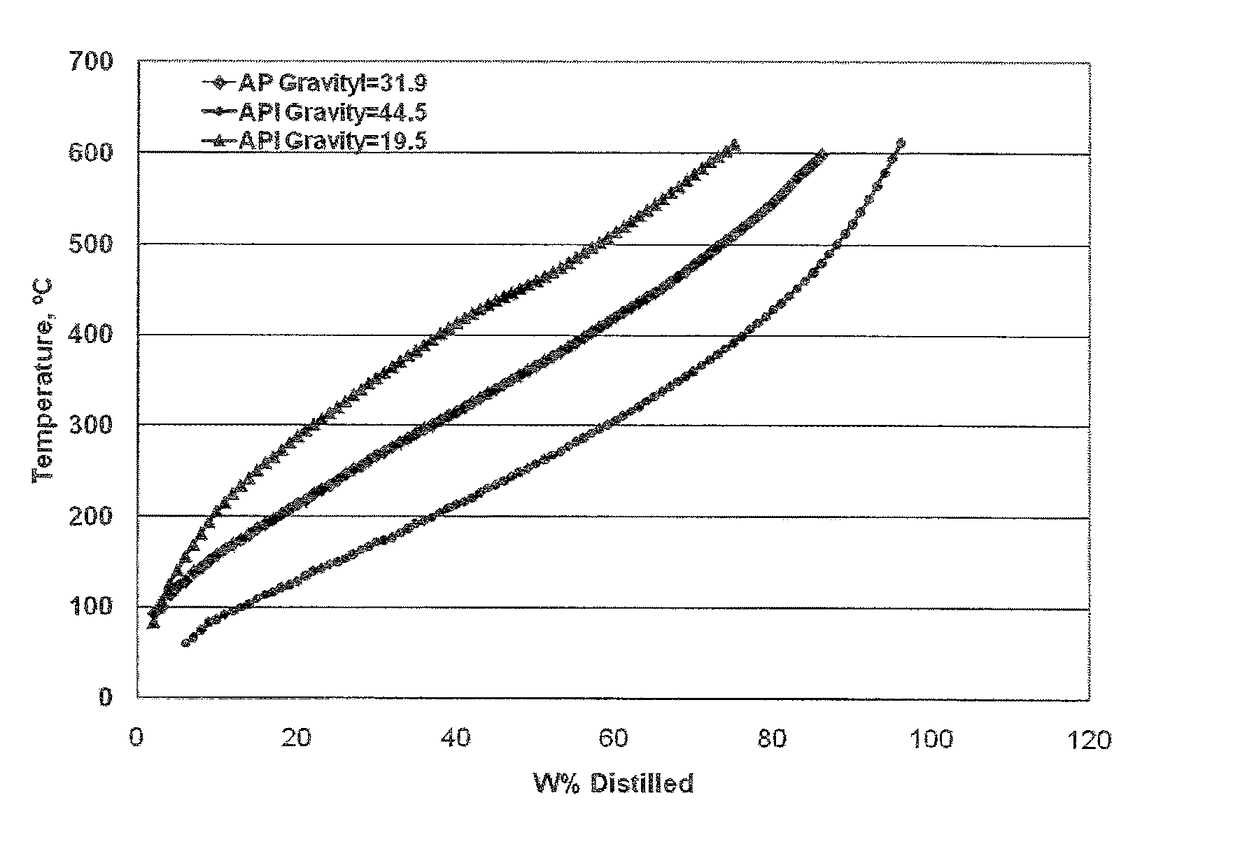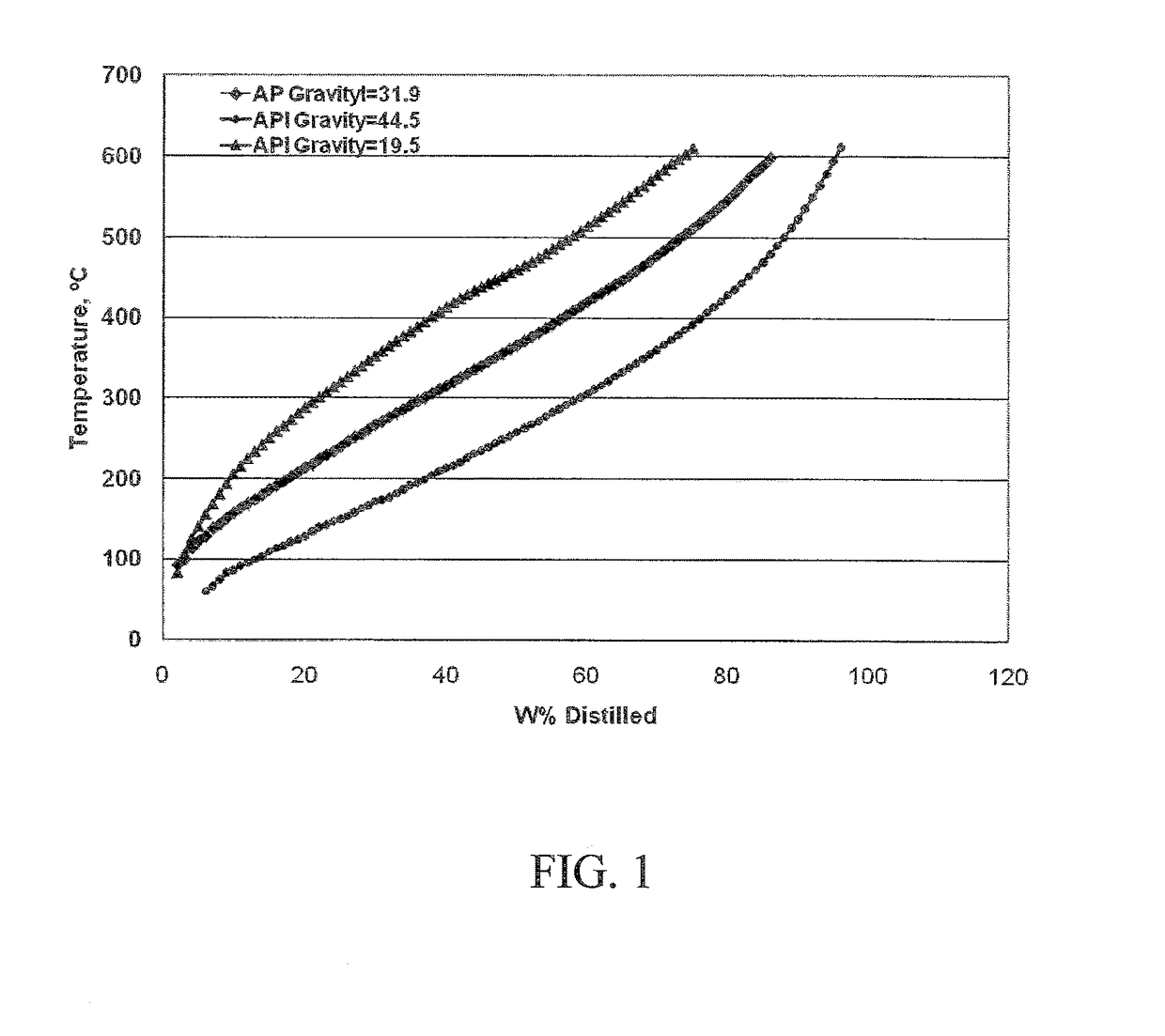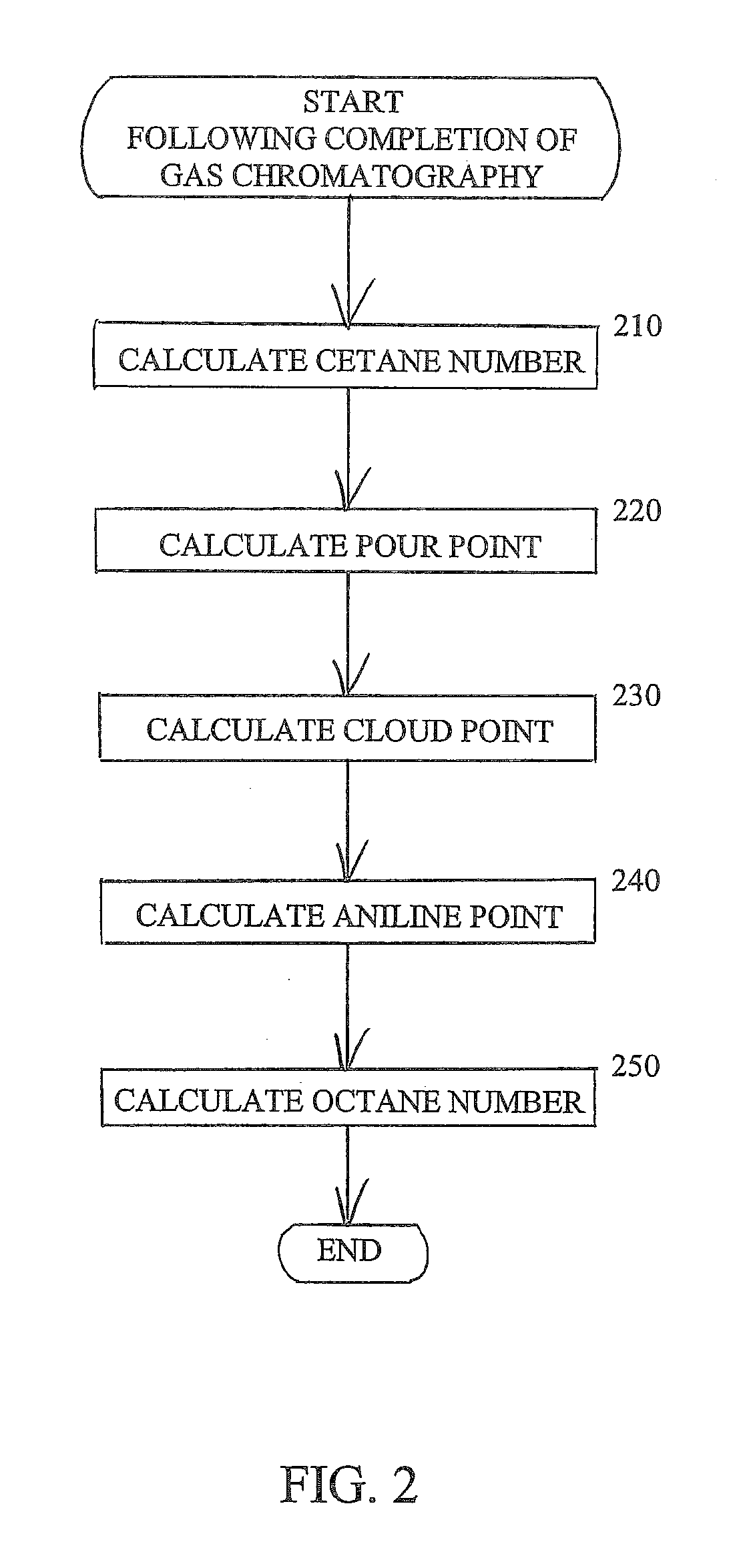Characterization of crude oil by simulated distillation
a crude oil and distillation technology, applied in the field of crude oil characterization by simulated distillation, can solve the problems of laborious, costly and time-consuming, and costly and time-consuming crude oil assay work-up, and achieve the effect of saving producers, marketers, and other crude oil users substantial expense, effort and time, and better understanding crude oil compositions
- Summary
- Abstract
- Description
- Claims
- Application Information
AI Technical Summary
Benefits of technology
Problems solved by technology
Method used
Image
Examples
example 1
[0045]A set of constants KCET, X1CET-X7CET, KPP, X1PP-X7PP, KCP, X1CP-X7CP, KAP, and X1AP-X7AP was determined using linear regression. These constants are given in Table 3.
TABLE 3CetaneNumberPour PointCloud PointAniline PointProperty(CET)(PP)(CP)(AP)K544509.81344488.4395024.024390.7X1−1932359.8−4907366.2−1429569.6−49357.1X22161099.35503008.01604628.052455.3X3−796440.7−2031119.7−592968.1−18616.3X4142762.7527938.4136360.5−41985.4X5−177339.2−699945.0−177392.565171.0X690209.8361176.891570.3−33881.4X7−30458.6−87436.2−25137.2408.8
example 2
[0046]The following example is provided to demonstrate an application of equations (2) through (5). A sample of Arabian medium crude with a 15° C. / 4° C. density of 0.8828 Kg / l (e.g., at 15° C. / 4° C. using the method described in ASTM D4052) was analyzed by gas chromatography using the ASTM D2887 method. The simulated distillation data is shown in Table 4:
TABLE 4W %Temp. ° C.01237368483594610071138121912710138111441215113157141651517216175171851819119196202042121022216232222422925235262412724928255292613026731272322793328534290352973630337308383153931940326413314233743342443484535446360473664837249378503845139052396534025440955415564225742858434594406044661452624586346564471654786648567492684996950670513715207252873535745437555176559775677857579583805928159982608
[0047]The mid boiling point of the crude oil is taken from the data at the 50 W % point, which is 384° C. (657 K). The calculations below are shown with temperature expressed in Kelvin, and using a density at 15° C. / 4° C. usi...
example 3
[0053]An example calculation of WABP is presented below. When the sample is distilled, the boiling point of the sample is determined to be 149° C. when 10 W % of the sample is recovered, 230° C. when 30 W % of the sample is recovered, 282° C. when 50 W % of the sample is recovered, 325° C. when 70 W % of the sample is recovered, and 371° C. when 90 W % of the sample is recovered. Thus, T10 is 149° C., and the other values are similarly determined.
WABT=[149*10+230*30+282*50+325*70+371*90][10+30+50+70+90]=315
[0054]In alternate embodiments, the present invention can be implemented as a computer program product for use with a computerized computing system. Those skilled in the art will readily appreciate that programs defining the functions of the present invention can be written in any appropriate programming language and delivered to a computer in any form, including but not limited to: (a) information permanently stored on non-writeable storage media (e.g., read-only memory devices s...
PUM
| Property | Measurement | Unit |
|---|---|---|
| cloud point | aaaaa | aaaaa |
| boiling point | aaaaa | aaaaa |
| cloud point | aaaaa | aaaaa |
Abstract
Description
Claims
Application Information
 Login to View More
Login to View More - R&D
- Intellectual Property
- Life Sciences
- Materials
- Tech Scout
- Unparalleled Data Quality
- Higher Quality Content
- 60% Fewer Hallucinations
Browse by: Latest US Patents, China's latest patents, Technical Efficacy Thesaurus, Application Domain, Technology Topic, Popular Technical Reports.
© 2025 PatSnap. All rights reserved.Legal|Privacy policy|Modern Slavery Act Transparency Statement|Sitemap|About US| Contact US: help@patsnap.com



